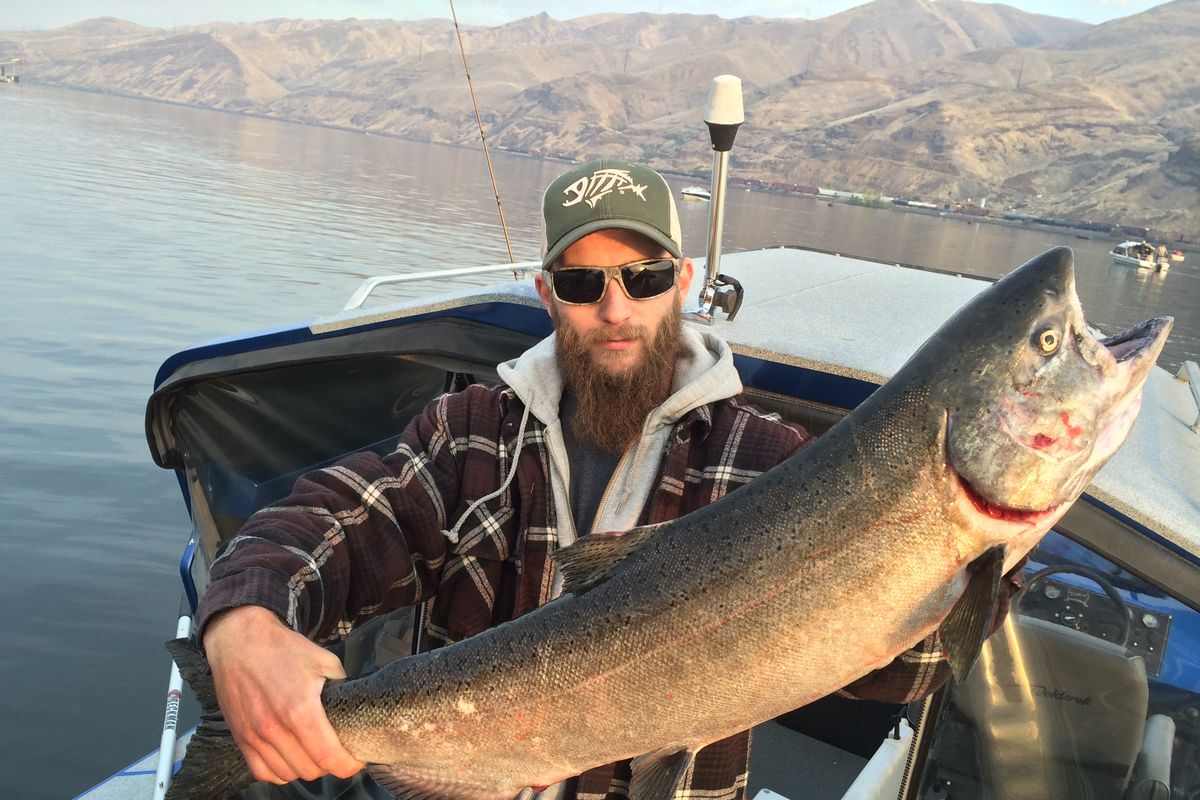Landers: Catches are only getting bigger

The nice thing about fishing in the lower Clearwater River this time of year is that the fish you catch are either big or bigger.
Steelhead have been attracting anglers to the waters near Lewiston since July, when the fish started trickling over Lower Granite Dam in decent numbers and up the Snake River toward Idaho.
More recently, salmon have been showing in big numbers as the second largest run of fall chinook on record pushes into the Columbia River system.
Note the change from earlier predictions: This run appears to be a runner-up to the 2013 record run of 1,268,400 adult fall chinook.
Expectations of record returns forecast for the 2014 fall chinook run were officially downgraded by Oregon and Washington fish managers on Wednesday from the forecast 1,510,600 down to 1,183,300 adult fall chinook.
That’s still a megaload of fish heading up the Columbia, Snake and also the Clearwater and Salmon rivers.
The hottest chinook fishing is in the Hanford Reach of the Columbia, but Idaho anglers are enjoying their share.
On Friday and Saturday, a surge of 7,000 adult fall chinook came over Lower Granite Dam – the last Snake River dam they cross before entering Idaho waters near Lewiston. Daily counts have continued in the 1,600-1,800 range.
Steelhead are moving over the dam at the rate of 2,300-4,000 a day. The total steelhead numbers are below average but 12,000 higher than last year at this time.
“We are anticipating that the fall chinook salmon returning to Idaho will be the second largest we have seen in quite some time – last year was the largest,” said Joe DuPont, Idaho Fish and Game Department regional fisheries manager in Lewiston.
“We are expecting around 50,000 adults to pass over Lower Granite Dam and what is even more exciting is this year the majority of the adult fish are three-ocean fish that typically range from 18-22 pounds.”
Fin-clipped fall chinook and steelhead currently can be kept on the Clearwater only in the lower stretch downstream of the U.S. 12 Memorial Bridge. The upriver catch-and-keep season for steelhead starts Oct. 15.
Catch rates are improving as more fish move into Idaho, and anglers are impressed with the sizes.
“One interesting thing about this year’s steelhead A run is that more than half the fish that have passed over Lower Granite Dam are two-ocean fish running 9-13 pounds,” DuPont said.
“A run” is the term used for the earlier-arriving steelhead that are typically dominated by one-ocean fish and are mainly destined for the Salmon and Grande Ronde rivers and up the Snake to Hells Canyon Dam.
“People have been pleased with the size of the fish they are catching. Now the B run is reaching Idaho, the size of the fish should just get bigger.” The “B run” is the term for later-arriving and generally larger two-ocean steelhead bound mostly for the Clearwater River Basin.
Fall chinook anglers in Idaho often wonder why “wild” fish are protected when they seem to catch more “unclipped” salmon than “clipped” salmon produced at hatcheries.
DuPont explains:
“Only about 30 percent of the chinook passing over Lower Granite Dam are fin-clipped. That is because a lot of wild fish are returning and because around half the hatchery fall chinook released in Idaho are clipped.” (The low clipping proportion was adopted years ago when returns were low to help build the run.) “Thus, anglers will have to catch around four unmarked fish for every clipped fish that can be harvested.”
Why can’t anglers harvest fall chinook upstream of Memorial Bridge?
DuPont answers:
• “Only about 25 percent of the hatchery fish released into the Clearwater River are clipped. When you mix in the wild fish, only about 15 percent of the fish are clipped. That doesn’t leave a lot of fish to be harvested. This clip rate is set (under federal endangered species oversight) until 2017. Discussion will occur to decide what the new clip rate will be starting in 2018.”
• Conflict likely would occur with the popular catch-and-release steelhead fishery.
• The Nez Perce Tribe, which is largely responsible for rebuilding the fall chinook run in Idaho, has rights to the fishery. Idaho fish managers want to be considerate of their interests especially because most of the Clearwater River is in the Nez Perce Tribal Reservation.
“We will have discussions with the Tribe about this when we feel the time is appropriate,” DuPont said.
Anglers should be aware of all of these numbers and explanations, but the main thing is to get out fishing. The fish have arrived after a long upstream journey in big numbers and big sizes.
You could be as lucky as Shawn Barrong of Spokane, who chose this year of huge fish returns to buy a used fishing boat.
Last week on the lower Clearwater – the first time he had it out for salmon fishing – Barrong’s son, Tyler, landed a huge chinook.
Then Shawn landed a big steelhead not far away. Game on!
“I’d almost forgotten how great it is to catch these big fish,” he said after texting the fish photo of his son far and wide. “It’s a blast.”
Contact Landers at (509) 459-5508 or email richl@spokesman.com.